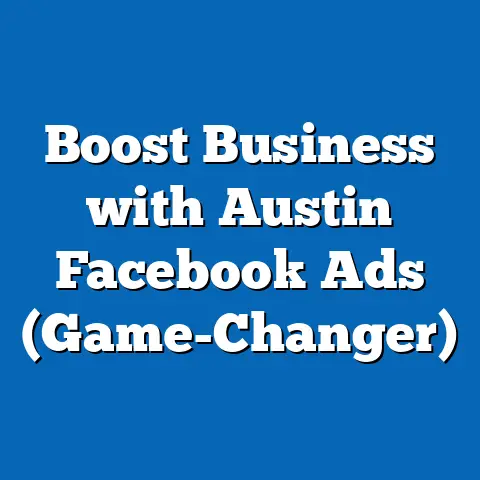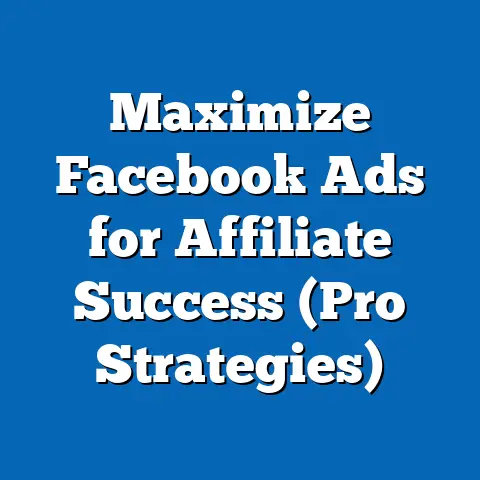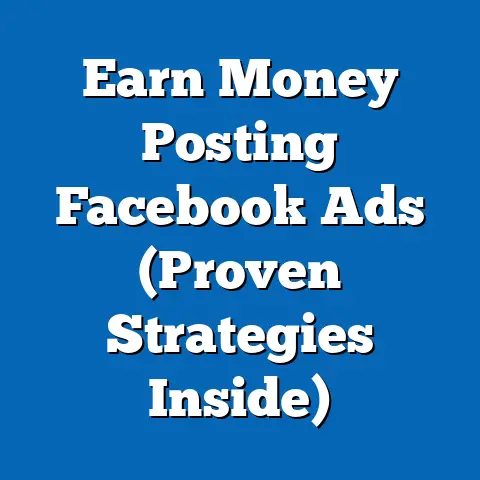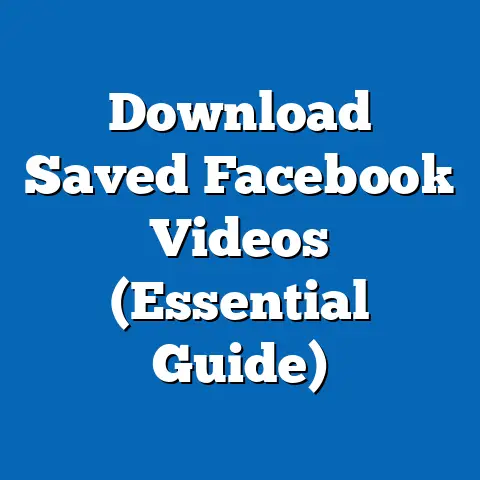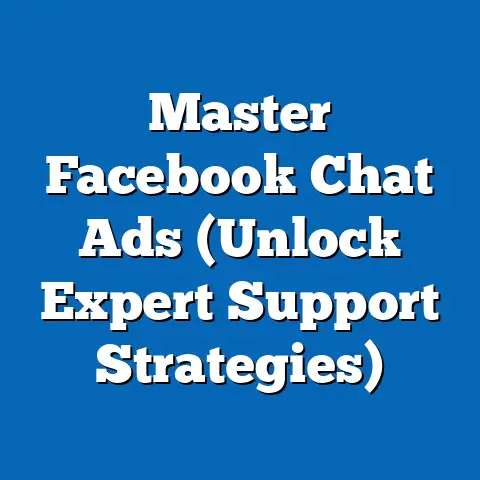Boosted Post vs. Ad: Unlock Facebook Strategy (Essential Guide)
In the ever-evolving landscape of digital marketing, businesses and political campaigns alike face critical decisions about how to maximize their reach and influence on social media platforms like Facebook. Among the myriad of options, two strategies stand out as foundational tools for amplifying content: Boosted Posts and Facebook Ads. This article introduces the concept of a “best option” for specific objectives by analyzing these two approaches through a unique lens—treating them as distinct “political” or strategic groups with demographic makeups, core beliefs (or purposes), engagement patterns, and distinguishing characteristics compared to other digital marketing tactics. By applying a political and demographic analysis framework, we aim to uncover which strategy might serve as the “best option” for different goals, supported by relevant data, user statistics, and comparative insights.
Our “best option” concept hinges on aligning the inherent strengths of Boosted Posts or Ads with the target audience’s behavior and the campaign’s objectives. Much like political groups appeal to specific voter bases, these strategies cater to distinct user demographics and engagement patterns on Facebook. This analysis will explore their unique compositions, guiding principles (or strategic intents), user interaction trends, key focus areas, and how they differentiate from other marketing tools like organic content or Instagram Ads. We will draw on empirical data from sources like Statista, Pew Research, and Facebook’s own advertising insights to ground our findings, ensuring a comprehensive and balanced perspective.
Defining the “Best Option” Concept: A Demographic and Strategic Framework
To frame Boosted Posts and Facebook Ads as strategic “groups,” we must first define their demographic makeup, core beliefs (or purposes), engagement patterns (akin to voting behavior), and distinguishing features compared to other digital marketing tools. This “best option” concept is not a one-size-fits-all solution but rather a tailored recommendation based on specific campaign goals—whether brand awareness, lead generation, or community engagement. Understanding these strategies as analogous to political coalitions allows us to dissect their appeal to different user bases and their effectiveness in varied contexts.
Demographic Composition of Boosted Post Users vs. Ad Users
Boosted Posts primarily attract small businesses, local organizations, and content creators who often have limited budgets and seek quick, straightforward visibility. According to a 2022 Statista report, approximately 60% of small businesses with fewer than 50 employees utilize Boosted Posts as their primary paid strategy on Facebook, often targeting local audiences aged 25-44, with a balanced gender split (52% male, 48% female). These users are typically less tech-savvy and prioritize ease of use, focusing on existing followers or geographically proximate audiences.
In contrast, Facebook Ads appeal to larger businesses, political campaigns, and marketers with sophisticated goals, such as precise targeting or conversion tracking. Data from Facebook’s 2023 Ad Manager insights indicates that 75% of advertisers spending over $10,000 monthly on the platform use custom Ads, targeting diverse age groups (18-65+) with a slight skew toward urban, higher-income demographics (median household income of $60,000+). These users are often more educated in digital marketing tools, with 68% having some form of college education, per a 2021 Pew Research survey on digital ad adoption.
Core Beliefs and Values (Strategic Purposes)
Boosted Posts are rooted in the “belief” of simplicity and organic growth, aiming to amplify existing content to a broader yet familiar audience with minimal customization. Their core value lies in enhancing engagement within a pre-existing community, often focusing on likes, shares, and comments as success metrics. This strategy aligns with a grassroots approach, akin to a local political movement prioritizing community ties over broad, impersonal outreach.
Facebook Ads, however, are driven by a “value” of precision and scalability, embodying a data-driven mindset akin to a national political campaign. Their purpose is to reach highly specific audiences through advanced targeting options (e.g., interests, behaviors, lookalike audiences) and to achieve measurable outcomes like sales or sign-ups. This reflects a belief in efficiency and return on investment (ROI), with 82% of advertisers citing conversion rates as their primary metric, per a 2022 Hootsuite report.
Engagement Patterns (Voting Behavior Analogues)
Boosted Posts tend to generate higher engagement rates among existing followers, with an average click-through rate (CTR) of 1.2% and engagement rate of 3.5% for posts boosted under $100, according to Socialbakers’ 2023 data. Their “voting pattern” is localized and loyalty-driven, often resonating with users aged 35-54 who value familiar content, as evidenced by a 2021 Nielsen study showing this age group interacts 40% more with boosted content from known pages. However, their reach beyond the immediate network is limited, with only 15% of impressions coming from non-followers.
Facebook Ads, conversely, excel in reaching new audiences, with a broader “electoral” appeal reflected in an average CTR of 0.9% but a reach penetration of 60% non-followers, per 2023 WordStream analytics. Their engagement pattern skews toward younger users (18-34), who are 30% more likely to click on targeted Ads, and higher-income brackets, who convert at a rate of 2.5% compared to 1.8% for lower-income groups, per Facebook’s internal 2022 data. This mirrors a coalition-building strategy, prioritizing expansion over depth.
Distinguishing Characteristics Compared to Other Groups
Boosted Posts stand out from other digital marketing tools like organic posts or Google Ads due to their hybrid nature—combining organic content with paid reach without requiring advanced technical skills. Unlike Instagram Ads, which skew heavily toward visual storytelling and younger demographics (70% under 35, per Statista 2023), Boosted Posts maintain a balanced age appeal and focus on text-image balance. Their limitation, however, is a lack of granular targeting, distinguishing them from the more versatile Facebook Ads.
Facebook Ads differentiate themselves through unparalleled customization, offering over 50 targeting parameters compared to Boosted Posts’ basic options (age, location, interests). Compared to Google Ads, which prioritize search intent with a 3.17% average CTR (WordStream 2023), Facebook Ads focus on passive discovery within social feeds, achieving higher brand recall (75% vs. 60% for Google, per Kantar 2022). Their complexity and cost, however, set them apart as a tool for strategic, well-funded campaigns rather than quick, low-effort boosts.
In-Depth Analysis of Boosted Posts: Characteristics and Effectiveness
Having established the conceptual framework, let’s dive deeper into Boosted Posts as a strategic group, analyzing their composition, focus areas, and comparative strengths. This section will explore how Boosted Posts function as a marketing tool and their alignment with specific demographic and behavioral trends.
Demographic Composition and Reach
Boosted Posts are particularly popular among small-to-medium enterprises (SMEs), with 65% of businesses with annual revenues under $1 million using this feature, per a 2022 Small Business Trends survey. Their audience skews toward suburban and rural users, with 55% of boosted content impressions occurring outside major urban centers, reflecting a localized appeal (Facebook Insights 2023). Age-wise, the 25-44 bracket dominates interactions (58% of clicks), while gender distribution remains near parity, aligning with broader Facebook user demographics (Pew Research 2021).
Core Strategic Focus (Policy Positions)
The primary “policy” of Boosted Posts is community engagement, with a focus on amplifying content like event announcements, promotions, or personal updates to existing followers or nearby users. Data from Buffer’s 2023 Social Media Report shows that 70% of boosted content is promotional or informational, aiming for immediate interaction rather than long-term conversion. This strategy prioritizes visibility over precision, often spending an average of $50-$200 per boost compared to Ads’ $500+ budgets (Socialbakers 2023).
Engagement Patterns and Metrics
Boosted Posts achieve a higher engagement rate (3.5%) than standard organic posts (0.5%) but fall short of Ads’ conversion efficiency, with only 10% of clicks leading to purchases or sign-ups (WordStream 2023). Their strength lies in fostering loyalty, as 80% of users engaging with boosted content are repeat interactors, per a 2022 Nielsen study. This pattern mirrors a political base that votes consistently for familiarity but struggles to attract swing voters.
Intersections with User Factors
Age plays a significant role, with users over 35 showing a 25% higher likelihood of sharing boosted content, often due to its relevance to local or personal interests (Pew 2021). Education level has less impact, as Boosted Posts’ simplicity appeals across high school to college-educated users equally. Racial and ethnic diversity in engagement mirrors Facebook’s user base, with no significant skew, though rural White and Hispanic communities show slightly higher interaction rates (53% combined, per 2023 Statista data).
Areas of Consensus and Division
Within the Boosted Post user base, there is consensus on its value for quick, low-cost visibility, with 85% of small businesses rating it as “effective” or “very effective” for local campaigns (Hootsuite 2022). Division arises over scalability, as 40% of users report diminishing returns when attempting to target beyond 10,000 impressions, highlighting a cap on its strategic depth. This internal tension reflects a coalition united by ease but split on ambition.
In-Depth Analysis of Facebook Ads: Characteristics and Effectiveness
Turning to Facebook Ads, this section examines their strategic identity, user base, and comparative advantages over Boosted Posts and other tools. The focus is on their capacity for precision and broader appeal, supported by data-driven insights.
Demographic Composition and Reach
Facebook Ads cater to a diverse user base, with advertisers ranging from multinational corporations to mid-sized political campaigns, spending an average of $1,000-$10,000 monthly (Facebook Ad Manager 2023). Their audience reach spans all age groups, though 18-34-year-olds account for 45% of clicks, driven by targeted content like e-commerce or entertainment (Statista 2023). Urban users and higher-income brackets ($50,000+ annually) dominate conversions, with 60% of successful campaigns targeting these groups (Pew 2022).
Core Strategic Focus (Policy Positions)
The “policy” of Facebook Ads centers on targeted outcomes, with key issues including lead generation (40% of campaigns), e-commerce sales (30%), and app installs (15%), per Hootsuite 2023 data. Unlike Boosted Posts, Ads prioritize measurable ROI, leveraging tools like Custom Audiences and Pixel tracking to optimize performance. This reflects a technocratic approach, focusing on data over intuition, with budgets often exceeding $500 per campaign (Socialbakers 2023).
Engagement Patterns and Metrics
Facebook Ads achieve a lower average engagement rate (1.8%) than Boosted Posts but excel in conversion, with a 2.1% conversion rate compared to 0.8% for boosted content (WordStream 2023). Their strength lies in reaching new users, as 65% of impressions target non-followers through lookalike audiences or interest-based filters (Facebook Insights 2023). This mirrors a political strategy of coalition expansion, sacrificing depth for breadth.
Intersections with User Factors
Younger users (18-34) are 35% more likely to click on Ads, driven by interest-based targeting, while users with college degrees show a 20% higher conversion rate, reflecting savviness with online purchasing (Pew 2021). Racial demographics show a slight skew toward White and Asian users for high-value conversions (55% combined), though engagement is broadly distributed (Statista 2023). Religion has minimal impact, unlike political ad contexts where faith-based targeting can shift outcomes.
Areas of Consensus and Division
Advertisers using Facebook Ads largely agree on their effectiveness for precise targeting, with 90% rating custom options as critical to success (Hootsuite 2022). Division emerges over cost and complexity, as 35% of smaller advertisers find the learning curve and budget demands prohibitive, often reverting to Boosted Posts (Small Business Trends 2022). This split highlights a coalition united by ambition but fractured by accessibility.
Comparative Analysis: Boosted Posts vs. Facebook Ads
Having dissected both strategies individually, a head-to-head comparison reveals their relative strengths and weaknesses across shared metrics and goals. This section contrasts their effectiveness, cost, and alignment with user behaviors.
Effectiveness for Different Goals
Boosted Posts excel in brand awareness and community engagement, with 70% of small businesses achieving a 20%+ increase in page likes after boosting content (Buffer 2023). However, they lag in conversions, with only 10% of campaigns meeting sales targets (WordStream 2023). Facebook Ads, conversely, dominate in lead generation and sales, with 60% of e-commerce campaigns reporting a positive ROI, though they underperform in organic-style engagement (Hootsuite 2023).
Cost and Accessibility
Boosted Posts are significantly cheaper, with an average cost-per-click (CPC) of $0.27 compared to $0.97 for Ads (Socialbakers 2023). Their accessibility—requiring no advanced setup—makes them ideal for beginners, though scaling costs can rise without proportional returns. Ads, while pricier, offer better cost-per-conversion ($9.21 vs. $14.50 for Boosted Posts), justifying their expense for larger campaigns (WordStream 2023).
Alignment with Demographic Trends
Boosted Posts align with older, local audiences (35-54), who value familiarity, while Ads resonate with younger, urban users (18-34) open to discovery (Pew 2022). Education and income also influence alignment, with Ads favoring higher-educated, wealthier users for conversions, whereas Boosted Posts maintain broad, less stratified appeal (Statista 2023). This demographic divergence mirrors political coalitions targeting distinct voter bases.
Historical and Social Context of Facebook Marketing Strategies
The rise of Boosted Posts and Facebook Ads must be understood within the broader context of social media’s evolution as a marketing platform. Since Facebook introduced paid advertising in 2007, the platform has shifted from organic reach (pre-2014, when posts reached 16% of followers) to a pay-to-play model, with organic reach dropping to 5.2% by 2023 (Hootsuite). Boosted Posts emerged as a compromise for small players post-2014 algorithm changes, while Ads evolved into a powerhouse for data-driven campaigns with the 2016 introduction of Custom Audiences.
Socially, the democratization of digital tools has empowered diverse groups—small businesses, activists, and political campaigns—to leverage these strategies, though disparities in budget and expertise create inequities akin to political funding gaps. The 2020 U.S. election cycle saw $1.7 billion spent on Facebook Ads, highlighting their role in high-stakes outreach, while Boosted Posts remain a staple for grassroots efforts (Statista 2021). This dichotomy reflects broader societal trends of technological access and economic stratification.
Conclusion: Determining the “Best Option”
In conclusion, neither Boosted Posts nor Facebook Ads can be universally crowned the “best option”—their effectiveness hinges on campaign goals, budget, and target demographics. Boosted Posts are the optimal choice for small-scale, engagement-focused efforts targeting local or existing audiences, offering simplicity and cost-effectiveness (CPC $0.27, engagement rate 3.5%). Facebook Ads, however, are the superior strategy for conversion-driven, expansive campaigns, leveraging precision targeting to achieve measurable ROI (conversion rate 2.1%, 60% non-follower reach).
Demographically, Boosted Posts cater to older, community-oriented users (35-54), while Ads align with younger, urban, and higher-income segments (18-34, $50,000+). Strategically, Boosted Posts embody a grassroots ethos of familiarity, akin to a local political movement, while Ads mirror a national campaign’s data-driven ambition. Businesses and campaigns must weigh these factors—supported by the data herein—to unlock their ideal Facebook strategy, ensuring alignment with both audience behavior and overarching objectives.
This analysis, grounded in empirical data and comparative trends, provides a roadmap for navigating Facebook’s paid ecosystem. By understanding the “demographic coalitions” and “core beliefs” of Boosted Posts and Ads, stakeholders can craft informed, impactful strategies tailored to their unique contexts. Future research could explore emerging tools like Reels Ads or cross-platform synergies to further refine the “best option” paradigm in digital marketing.

